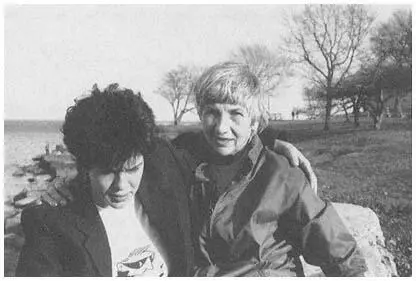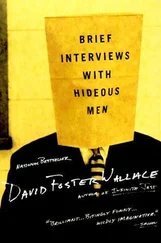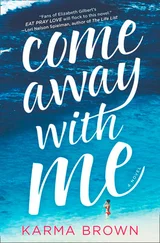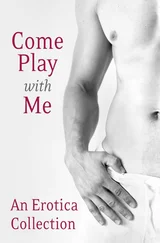Scott MacDonald - A Critical Cinema 2 - Interviews with Independent Filmmakers
Здесь есть возможность читать онлайн «Scott MacDonald - A Critical Cinema 2 - Interviews with Independent Filmmakers» весь текст электронной книги совершенно бесплатно (целиком полную версию без сокращений). В некоторых случаях можно слушать аудио, скачать через торрент в формате fb2 и присутствует краткое содержание. Год выпуска: 1992, ISBN: 1992, Издательство: University of California Press, Жанр: Прочая документальная литература, на английском языке. Описание произведения, (предисловие) а так же отзывы посетителей доступны на портале библиотеки ЛибКат.
- Название:A Critical Cinema 2: Interviews with Independent Filmmakers
- Автор:
- Издательство:University of California Press
- Жанр:
- Год:1992
- ISBN:9780585335100
- Рейтинг книги:3 / 5. Голосов: 1
-
Избранное:Добавить в избранное
- Отзывы:
-
Ваша оценка:
- 60
- 1
- 2
- 3
- 4
- 5
A Critical Cinema 2: Interviews with Independent Filmmakers: краткое содержание, описание и аннотация
Предлагаем к чтению аннотацию, описание, краткое содержание или предисловие (зависит от того, что написал сам автор книги «A Critical Cinema 2: Interviews with Independent Filmmakers»). Если вы не нашли необходимую информацию о книге — напишите в комментариях, мы постараемся отыскать её.
A Critical Cinema 2: Interviews with Independent Filmmakers — читать онлайн бесплатно полную книгу (весь текст) целиком
Ниже представлен текст книги, разбитый по страницам. Система сохранения места последней прочитанной страницы, позволяет с удобством читать онлайн бесплатно книгу «A Critical Cinema 2: Interviews with Independent Filmmakers», без необходимости каждый раз заново искать на чём Вы остановились. Поставьте закладку, и сможете в любой момент перейти на страницу, на которой закончили чтение.
Интервал:
Закладка:
While they have a good deal in common, their work is also quite distinct. Mekas has made a permanent home in New York. His primary influences are European; indeed, one of the central quests of his films has been to maintain his Lithuanian heritage and his contact with European culture. His film style is often wildly free-form; his gestural camera movements, quick editing, and single-framing create a sense of childlike excitement about the people and places he records. His films are sensual but avoid the erotic, and in recent years they have celebrated the joys of the conventional nuclear family. Baillie's filmmaking began when he moved to San Francisco and often reflects the Eastern influences that were so pervasive on the West Coast during the sixties. While he too developed a hand-held personal style, its tendency has always been toward the meditative. Indeed, with Yoko Ono, he was probably the first modern filmmaker to explore the potential of the single-shot film, in
All My Life
(1966) and
Still Life
(1966). Baillie's films are both sensual and erotic; they seem less involved with searching for a homeland and a home than with chronicling the film poet's physical, spiritual, and erotic travels.
Neither Yoko Ono nor Anthony McCall have made films in over a decade, but their films of the late sixties and seventies use minimalist tactics as a means of providing new forms of film experience. Ono's earliest films are either single-shot slow motion portraits of actions that challenge viewers' assumptions about the correct "velocity" of film action, or serial examinations of the body that challenge the commercial film industry's fetishization of "filmic" (i.e., erotically marketable) parts of the body for periods of screen time that conform to conventional audiences' film-erotic "needs." McCall's early films are as minimalist as
Page 9
Ono's. In
Line Describing a Cone
(1973) and his other "Cone films," as well as in
Long Film for Four Projectors
(1974) and
Four Projected Movements
(1975), McCall focuses the moviegoer's attention on the projector beam (the movie projector is located in the room during these films) for relatively long periods
Line Describing a Cone
lasts thirty minutes;
Long Film for Four Projectors,
six hoursas a means of calling attention to the cinema environment and its sociopolitical implications: what does it mean that nearly all of our public film viewing involves our sitting in rigid rows of chairs looking up at the shadow products of an apparatus kept out of the view, and control, of the audience? Both Ono and McCall later collaborated with others on films that had quite overt political agendas: Ono and John Lennon made
Bed-In
(1969), a documentation of their Bed-In for peace in Montreal; McCall worked with Andrew Tyndall on
Argument
(1978), a feature-length exploration of the political implications of men's fashion advertising and of mass market media practice in general, and with several women and men on
Sigmund Freud's Dora
(1979), an examination of the gender-politics of a famous Freudian case.
Ono and McCall differ in the specifics of their politicsOno's films are internationalist, McCall's implicitly or explicitly Marxistand in terms of the viewership they address in their films. At the beginning of her career, Ono was part of Fluxus, an international group of artists functioning outside the mass media and in defiance of accepted art practice and institutions, but as her resources grew, so did her interest in addressing a much larger audience:
No. 4
(
Bottoms
) (1966) was a widely reported happening in England, and the later Lennon-Ono collaborations aimed at the huge pop music audience and beyond.
Line Describing a Cone
and McCall's other early films were designed for small groups in art gallery contexts (indeed, the Cone films and
Long Film for Four Projectors
can be understood as "light sculptures"), and his collaborative films were designed as catalysts for small discussion groups in big-city art-ghetto screening spaces, or in academic settings.
The volume's final pairing reveals similarities and differences in two filmmakers who have worked toward a "global" approach to filmmaking: Watkins most obviously in the 14 1\2-hour
The Journey
(1987) and Reggio in a trilogy of films, the first two of which
Koyaanisqatsi
(1983) and
Powaqqatsi
(1988)have been completed. Both filmmakers have explored the relationships of industrialized and "developing" nations and have emphasized the degree to which modern industrialized society has tended to undervalue regional and ethnic heritages, the natural environment, and the meaningful participation of the individual. Both filmmakers have circled the globe to create a far broader spectrum of people and places than the commercial cinema provides and to focus
Page 10

Ross McElwee and his father (Dr. Ross McElwee)
during the shooting of
Backyard
(1984).
their viewers on these people not as backdrops for the fictional adventures of Western swashbucklers, but as individuals with concerns, ideas, and accomplishments worthy of our sustained attention.
Reggio and Watkins differ radically in their understanding of the "correct" production process for such work, and in their assumptions about how their finished films should engage viewers. Reggio functions in the main like a conventional, commercial director: he raises adequate capital to finance his films, then travels to locations with his crew to record the societies that interest him. The individual films are cut so as to fit comfortably into the commercial exhibition system (indeed, he has received distribution assistance from industry luminaries Francis Ford Coppola and George Lucas). Reggio does not assume that viewing his films will initiate change in any direct fashion, but assumes that the images he presents and the implicit ideology of this imagery will affect at least some viewers' assumptions about the societies depicted. Watkins's central concern in making
The Journey
was to demonstrate an alternative to current media practice. The film was shot by local crews assembled in locations around the world, with financing raised locally by production groups. And Watkins's hopea hope that, thus far, has not come to fruitionmwas that the unusual nature of his film might instigate an international, activist network of those who had produced
The Jour
-
Page 11

Su Friedrich and her mother (Lore Friedrich), during the shooting of
The Ties That Bind
(1984).
ney
and those who came to see it which would directly address the problems articulated in the film.
There is no point in trying to enumerate the similarities and differences between the filmmakers in all eight pairings. Indeed, none of the summaries I have included does justice either to the many ways in which the pairs of filmmakers critique conventional cinema or to the conceptual fertility of the individual pairings. Additional relationships will be evident in the introductions to the particular interviews, as well as in the interviews themselves. And in any case, my pairings provide only one way of thinking through the work of the filmmakers interviewed. Many other arrangements of the filmmakers could instigate similar discussions.
Читать дальшеИнтервал:
Закладка:
Похожие книги на «A Critical Cinema 2: Interviews with Independent Filmmakers»
Представляем Вашему вниманию похожие книги на «A Critical Cinema 2: Interviews with Independent Filmmakers» списком для выбора. Мы отобрали схожую по названию и смыслу литературу в надежде предоставить читателям больше вариантов отыскать новые, интересные, ещё непрочитанные произведения.
Обсуждение, отзывы о книге «A Critical Cinema 2: Interviews with Independent Filmmakers» и просто собственные мнения читателей. Оставьте ваши комментарии, напишите, что Вы думаете о произведении, его смысле или главных героях. Укажите что конкретно понравилось, а что нет, и почему Вы так считаете.











